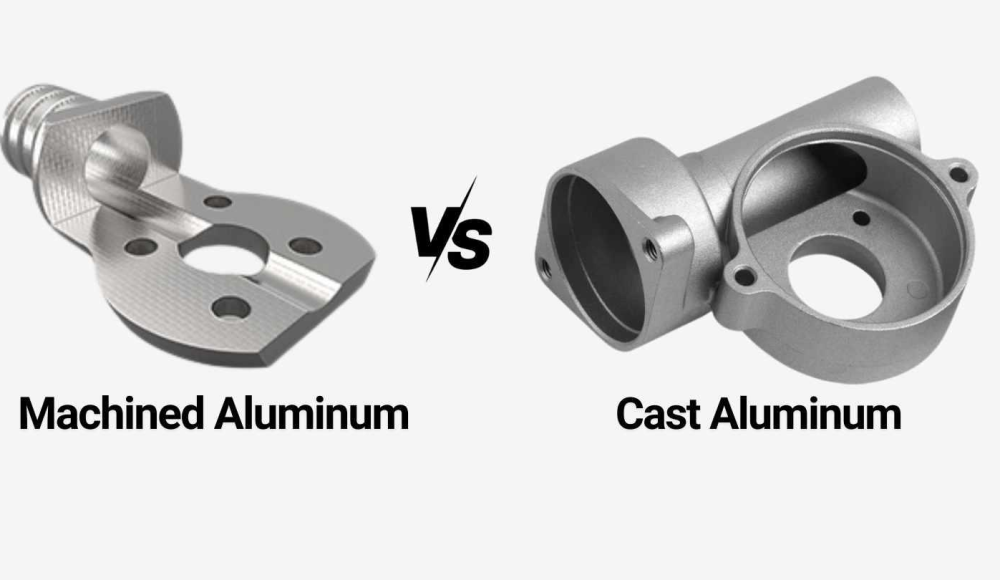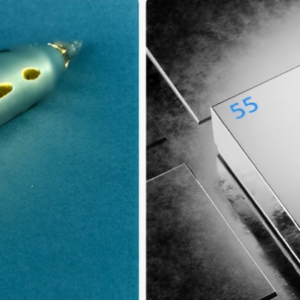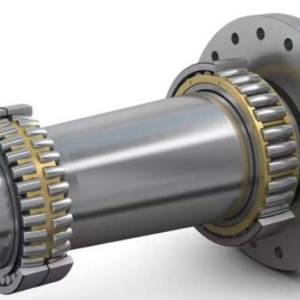Aluminum is one of the most widely used metals in modern manufacturing, valued for its lightweight, corrosion resistance, and excellent mechanical properties. When producing aluminum parts, two primary methods are commonly used—casting and machining. But how do they compare, and which one is best for your specific needs?
This article will explore the differences between cast aluminum and machined aluminum, their advantages, disadvantages, and the factors to consider when choosing the right method for your project.
Introduction
Aluminum’s prominence in industries such as aerospace, automotive, electronics, and construction stems from its unique properties. The choice between casting and machining aluminum parts depends on factors like design complexity, production volume, precision requirements, and cost considerations.
What is Machined Aluminum?
Definition and Process
Machined aluminum parts are created by removing material from a solid block of aluminum using cutting tools controlled by computer numerical control (CNC) machines. This subtractive manufacturing process allows for high precision and is ideal for producing complex geometries with tight tolerances.
Common Machining Techniques
- CNC Milling: Involves rotating cutting tools to remove material from the workpiece, enabling the creation of intricate shapes and features.
- CNC Turning: The workpiece is rotated while a stationary cutting tool shapes it, which is commonly used for producing cylindrical parts.
- Drilling: Utilizes rotating drill bits to create precise holes in the aluminum workpiece.
- Grinding: Employs abrasive wheels to achieve fine surface finishes and precise dimensions.
Industries That Use Machined Aluminum
- Aerospace: Components such as aircraft structural parts and housings.
- Automotive: Engine parts, heat sinks, and suspension components.
- Medical: Surgical instruments and prosthetic devices.
- Electronics: Computer casings and precision connectors.
Machining is preferred in applications requiring high precision, strength, and excellent surface finishes.
What is Cast Aluminum?
Definition and Process
Cast aluminum parts are produced by pouring molten aluminum into molds, where it solidifies into the desired shape. This process is well-suited for creating complex geometries and is cost-effective for high-volume production runs.
Common Casting Methods
Permanent Mold Casting
- Die Casting: Molten aluminum is injected under high pressure into steel molds, allowing for rapid production of precise parts.
- Vacuum Die Casting: A vacuum assists in drawing molten aluminum into the mold, reducing air entrapment and improving part quality.
- Investment Casting: Utilizes wax patterns to create molds for producing intricate and detailed components.
Expendable Mold Casting
- Sand Casting: Employs sand-based molds that are destroyed after each use, making it suitable for large parts and lower production volumes.
- Lost Wax Casting: Involves creating a wax model, coating it with a refractory material to form a mold, then melting away the wax and pouring in molten aluminum.
Industries That Use Cast Aluminum
Automotive: Engine blocks, transmission cases, and wheels.
Construction: Architectural components and structural supports.
Appliances: Parts for stoves, washing machines, and kitchen equipment.
Casting is advantageous for producing complex shapes and is cost-effective for mass production.
Key Differences Between Machined and Cast Aluminum
| Category | Machined Aluminum | Cast Aluminum |
| Material Types | Common alloys include 6061, 7075, and 2024, known for their strength and machinability. | Typically uses alloys like A356, A380, and A390, chosen for their casting properties and mechanical characteristics. |
| Production Speed | Suitable for low to medium production volumes; setup is quick, but machining time increases with part complexity. | Efficient for high-volume production once molds are created; initial mold fabrication can be time-consuming and costly. |
| Surface Finish | Achieves smooth and customizable finishes directly from the machining process; additional polishing can enhance appearance. | May exhibit surface imperfections; often requires post-processing such as machining or polishing to achieve desired finish. |
| Precision & Tolerances | Capable of achieving tight tolerances, making it ideal for components where precision is critical. | Generally offers lower precision due to factors like mold wear and metal shrinkage during cooling; suitable for parts where exact tolerances are less critical. |
| Strength & Durability | Machined parts maintain the material’s inherent strength and are free from internal defects, providing high reliability. | Cast parts may contain porosity or inclusions, potentially reducing strength; however, they are adequate for many applications. |
| Cost Considerations | Higher cost per unit due to machining time and tool wear; no need for expensive molds, making it cost-effective for small batches or prototypes. | Lower cost per unit in mass production, but initial investment in mold creation is substantial; cost-effective for large quantities. |
| Best Applications | Ideal for aerospace components, medical devices, and precision instruments where high accuracy and material integrity are paramount. | Suited for automotive parts, consumer goods, and structural components where complex shapes and cost efficiency are prioritized over extreme precision. |
Pros and Cons of Machined Aluminum
Pros
- High Precision: CNC machining allows for exact dimensions and tight tolerances, essential for critical applications.
- Superior Surface Finish: Produces parts with excellent surface quality, reducing the need for additional finishing processes.
- Material Integrity: Maintains uniform material properties without internal defects, ensuring consistent performance.
- Flexibility: Since no molds are needed, CNC machining can easily accommodate design modifications and small production runs.
- Wide Material Selection: A variety of aluminum alloys, including high-strength grades like 7075, can be used for machining.
Cons
- Higher Cost for Large Production Runs: While great for small batches, CNC machining becomes expensive when scaling up due to extended production times and tool wear.
- Material Waste: Since CNC machining is a subtractive process, a significant amount of material is cut away, leading to higher material costs compared to casting.
- Limited Design Complexity: While CNC machining can produce intricate shapes, some extremely complex geometries (such as internal cavities) are better suited for casting.
Pros and Cons of Cast Aluminum
Pros
Cost-Effective for Mass Production: Once the mold is made, casting enables high-volume production at a low per-unit cost.
Excellent for Complex Shapes: Cast aluminum can achieve intricate geometries that would be difficult or impossible to machine.
Lower Material Waste: Casting uses only the required amount of molten aluminum, minimizing material waste.
Good Strength-to-Weight Ratio: Cast aluminum components are strong enough for many applications while remaining lightweight.
Cons
Lower Precision: Cast parts often require additional machining to meet tight tolerances.
Surface Imperfections: Porosity, shrinkage, and rough textures can occur, requiring secondary finishing processes.
Higher Initial Costs: Creating molds for casting is expensive and time-consuming, making it less ideal for small production runs or prototyping.
When to Choose Machined Aluminum vs. Cast Aluminum
| Requirement | Best Choice | Reason |
| High Precision & Tight Tolerances | Machined Aluminum | CNC machining achieves superior accuracy, making it ideal for aerospace, medical, and precision engineering. |
| Complex Geometry & Intricate Shapes | Cast Aluminum | Casting allows for highly complex designs that would be difficult to machine. |
| Small Production Runs | Machined Aluminum | No need for expensive molds; CNC machining is cost-effective for low-volume projects. |
| Large-Scale Manufacturing | Cast Aluminum | Casting is more cost-effective for high-volume production. |
| Strong, High-Performance Parts | Machined Aluminum | Machining preserves material integrity, producing stronger and more reliable components. |
| Cost Efficiency for Simple Parts | Cast Aluminum | Casting is more economical for producing basic components with minimal machining. |
Conclusion
Both machined aluminum and cast aluminum have their place in manufacturing. CNC machining excels in precision, strength, and surface quality, making it ideal for high-performance applications. On the other hand, casting is the go-to choice for producing large quantities of complex parts at a lower cost.
Choosing the right method depends on your project’s requirements, budget, and production volume. If you need high accuracy and strength, machining is the better option. If cost and design complexity are more important, casting is the way to go.
If you’re unsure which process best fits your needs, consulting with an expert manufacturer can help you make the right decision.
Learn More & Get a Quote
For more information on CNC machining and aluminum casting, visit:
🔗 Xometry – CNC Machining Services
🔗 PHB Corp – Die Casting Explained
🔗 LeClaire Manufacturing – Sand Casting vs. Die Casting
Would you like to add any additional details or modify specific sections? 😊



